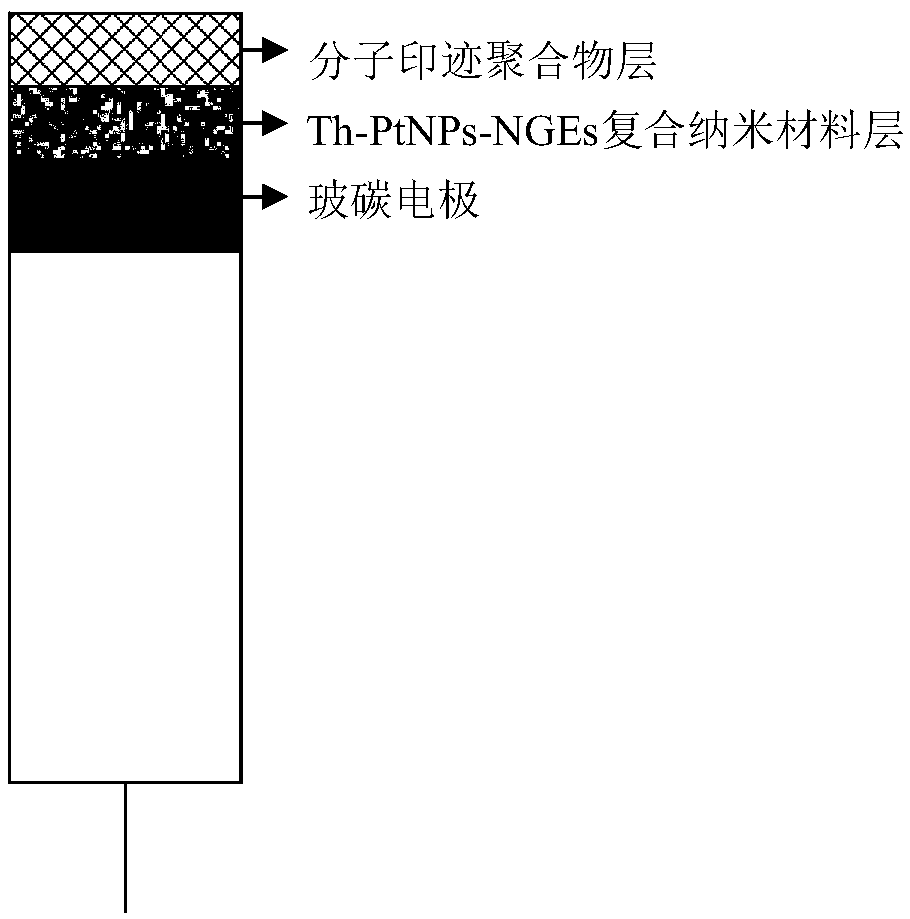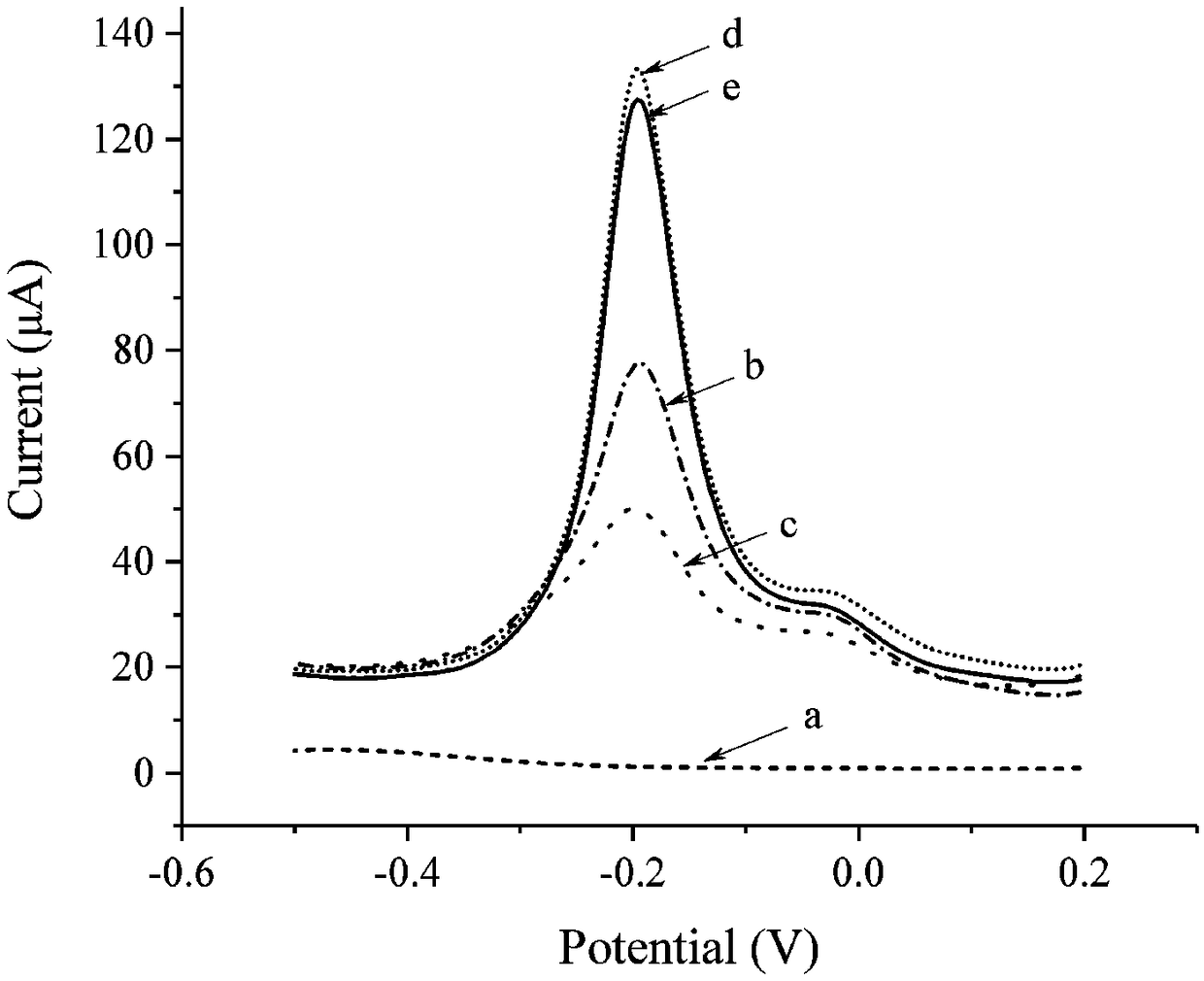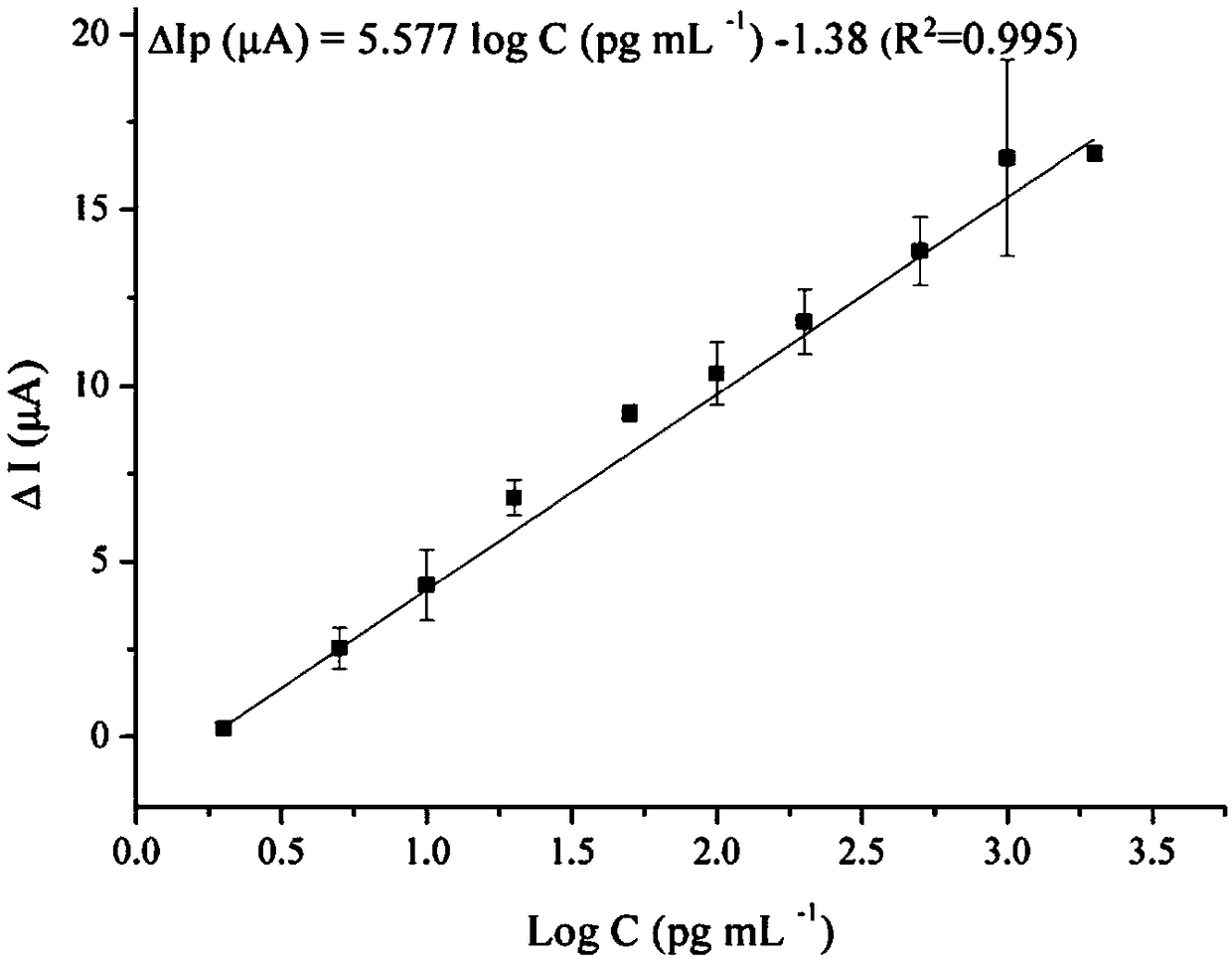Molecularly imprinted electrochemical sensor for detecting patulin and preparation method thereof
A technology of molecular imprinting and patulin, applied in the direction of material electrochemical variables, scientific instruments, instruments, etc., can solve the problems of high sensitivity and good selectivity, cumbersome operation process, expensive instruments and equipment, etc., and achieve low price and simple preparation , the effect of large specific surface area
- Summary
- Abstract
- Description
- Claims
- Application Information
AI Technical Summary
Problems solved by technology
Method used
Image
Examples
Embodiment 1
[0049] The preparation of molecularly imprinted electrochemical sensors is mainly divided into the following three steps:
[0050] 1. The preparation of Th-PtNPs-NGEs (thionine-Pt nanoparticles-nitrogen-doped graphene) composite nanomaterials is synthesized in two steps, as follows:
[0051] Step 1: 4.5 mL of H 2 PtCl 6 ·6H 2 O aqueous solution (20mmol L -1 ) and 110 μL hydrochloric acid aqueous solution (6mol L -1 ) were mixed, 50 mg of nitrogen-doped graphene was dispersed in the mixture, and ultrasonically mixed. Then add 5.0 mL of ascorbic acid aqueous solution (0.1 mol L -1 ) as a reducing agent, at room temperature ultrasonic 4h, reduction reaction. After the reaction, the black reaction product was separated by centrifugation, washed three times with acetonitrile and distilled water, and dried at 50°C to prepare Pt nanoparticles-nitrogen-doped graphene composite nanomaterials, which were stored at room temperature for later use.
[0052] The second step: 5 mg of ...
Embodiment 2
[0062] Patulin Molecularly Imprinted Electrochemical Sensor for Determination of Patulin in Samples
[0063] All electrochemical experiments were carried out on a CHI 660 electrochemical analyzer (Shanghai Chenhua Instrument Co., Ltd.). The three-electrode system included: the molecularly imprinted electrochemical sensor prepared in Example 1 was used as a working electrode, and a saturated calomel electrode (SCE , produced by Jiangsu Electrochemical Instrument Factory) was used as a reference electrode, and a platinum wire electrode was used as a counter electrode.
[0064] All experiments were done at room temperature.
[0065] Tested by differential pulse voltammetry (DPV), the electrolyte is 0.1mol L -1 Phosphate buffer solution (PBS, pH 6.0), DPV scanning potential from 0.2V to -0.6V. Finally, the concentration of patulin in the solution to be tested was determined by calculating the standard curve between the logarithm of the concentration of patulin in the solution (l...
PUM
 Login to View More
Login to View More Abstract
Description
Claims
Application Information
 Login to View More
Login to View More - R&D
- Intellectual Property
- Life Sciences
- Materials
- Tech Scout
- Unparalleled Data Quality
- Higher Quality Content
- 60% Fewer Hallucinations
Browse by: Latest US Patents, China's latest patents, Technical Efficacy Thesaurus, Application Domain, Technology Topic, Popular Technical Reports.
© 2025 PatSnap. All rights reserved.Legal|Privacy policy|Modern Slavery Act Transparency Statement|Sitemap|About US| Contact US: help@patsnap.com



